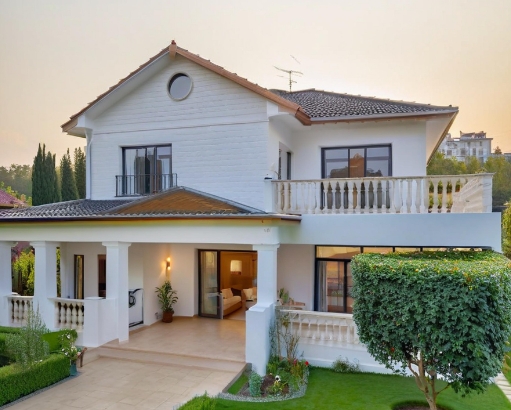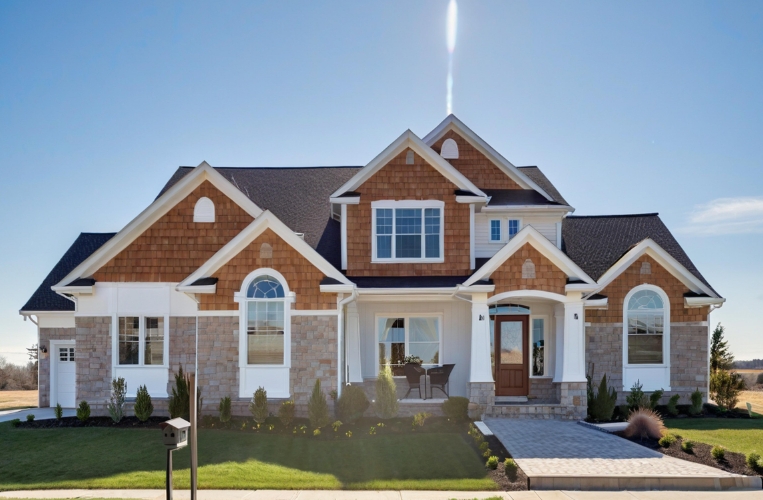Can a light steel villa withstand extreme weather?
Analysis of light steel villa's ability to resist extreme weather
The performance of light steel villa in extreme weather such as typhoon, earthquake, snowstorm and high humidity is significantly better than traditional brick-concrete structure, and its core advantages lie in: flexible structural design, dispersal of extreme weather load; galvanized anticorrosion materials, and the ability to adapt to harsh environments. Adaptation to harsh environments;

Composite wall technology combines heat preservation and compression resistance.
I. Wind resistance
Typhoon resistance
light gauge steel villa adopts aluminum-plated zinc light steel keel + skin effect design, load dispersion uniformity, can withstand more than 12 levels of typhoon, extreme cases can even cope with 16-17 levels of super typhoon. In extreme cases, it can even cope with 16-17 grade super typhoons. Actual tests show that the light steel structure disperses wind pressure through flexible deformation, avoiding collapse due to localized force concentration.
In the case of hurricane in the United States, the lightweight steel villa can still stand well after a five-stage hurricane, which verifies the reliability of its wind resistance.
Traditional brick-concrete houses have high self-weight and high structural rigidity, which can easily lead to wall cracks or collapses in typhoons due to localized stress concentration. The light steel villa is light in weight and solid in structure, and the main structure usually remains intact after the disaster.
Structural Stability
Lightweight steel villas form an overall flexible structure by connecting the frame with bolts, which can slightly deform and rebound with the wind during a typhoon, reducing the risk of structural damage.
II. Seismic performance
Seismic grade and performance
Light steel villa can disperse seismic energy through flexible frame structure + dense rib connection, resisting earthquake of 9 intensity, and the flexible feature of light steel structure can reduce the damage of the main structure, and the cost of post-disaster repair is only 20%-30% of that of the brick-concrete house. The cost of post-disaster repair is only 20%-30% of that of brick-concrete houses.
Traditional brick-concrete houses are prone to breakage of load-bearing walls in earthquakes due to the brittleness of the materials, which poses a higher risk of collapse.
III. Other Extreme Weather Adaptations
Blizzard and low temperature
Light steel villa adopts composite heat preservation wall (e.g. rock wool, glass wool), with wind and snow-proof roof design, which can withstand more than 1.5 meters of snow load, and its heat preservation performance is better than that of traditional brick-concrete houses.
High humidity and salt spray environment
The galvanized layer on the surface of light steel keel can effectively resist humidity and salt spray corrosion, especially suitable for coastal or rainy areas.
Traditional brick houses are susceptible to mold and mildew on the walls and corrosion of the steel reinforcement in humid environments, which significantly increases maintenance costs.
Insect and ant infestation
Lightweight steel materials are naturally insect-resistant and do not require additional anti-termite treatment, especially suitable for termite-active areas.
IV. Advantages compared with traditional houses
Typhoon/hurricane: light steel villa can withstand 12-17 levels, the structure is flexible and impact-resistant; traditional brick wall cracking, roof overturning risk is high.
Earthquake: Lightweight steel villa can withstand 9 levels of earthquake, easy to repair after the disaster; traditional brick-concrete load-bearing wall fracture, high repair costs.
Blizzard / low temperature: light steel villa insulation layer maintenance-free, snow load resistance; traditional brick hybrid need to add insulation layer, the roof is prone to snow collapse.

Will light gauge steel framing collapse in extreme weather?
The probability of collapse is very low: light steel villa through the strength of materials + structural design + redundant protection after the disaster, the risk of collapse in extreme weather such as typhoons, earthquakes and other extreme weather is significantly lower than that of traditional buildings. If you need to build a house in typhoon-/earthquake-prone areas, lightweight steel villa is a safer choice; however, you need to make sure that the construction complies with the specifications (e.g., bolt torque standards, quality of foundation pouring) in order to maximize its disaster-resistant performance.
Recommendations for Applicable Scenarios:
Coastal typhoon area: light steel villa is preferred (strong anti-corrosion performance);
Earthquake zone: light steel villa has better anti-seismic performance;
Alpine/rainy areas: composite insulation layer can reduce energy consumption and maintenance costs.


